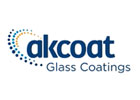A passive house villa with clear edges and geometric shapes has been created on the coast of Asturias.
Its large windows are cleverly shaded with structural solutions. A good feel-good climate is also ensured in summer by solar control glazing and premium spacer bars. With its extremely low thermal conductivity, it minimises heat loss from inside to outside as a warm edge in winter. As a cool edge, it reduces the flow of heat from outside to inside in summer, thus helping to keep indoor spaces cool. This detail delivers noticeable energy savings at all times of year.
In Gijon, on Spain’s northern coast, a villa has been built to the passive house standard which impresses with its clear stylistic idiom, excellent energy efficiency and high thermal comfort. Interlocking cubes of different sizes create a building with lots of daylight, shady verandas and open terraces.
For the demanding project to succeed, the architects of J. Noval Estudio de Arquitectura adapted the alignment and size of the openings as well as the shape of the building to the prevailing climate. This resulted in a compact, long building with a rectangular footprint, whose longest side runs from east to west.
The basement with utility room and other cellar rooms is supplied with daylight by English patios. The living area on the ground floor affords an interrupted view outside. The open roof terrace is accessible via the structure above the living space.
The building has large south-facing glass façades. Apart from structural shading solutions, windows and doors from Finstral also provide protection against excessive summer heat. As a leading premium provider, the South Tyrolean family company has over 50 years of experience and the most extensive range of windows in Europe. Finstral makes everything under one roof and mostly itself, which is unusual in the industry and ensures constantly high levels of quality.
For the passive house villa, the triple insulating glazing based on ECLAZ, PLANITHERM and COOL-LITE EXTREME 60/28 from Saint-Gobain Building Glass Europe was used. The premium spacer bar SWISSPACER Ultimate ensures an especially energy-efficient glass edge. This results in a window solution with a Uw value of 0.79 W/m2K at a light transmission factor of 77 percent.
“Our spacer bars are already well known as a warm edge for saving energy in winter,” says Frank Junker, Sales Manager at SWISSPACER. “However, they also offer advantages in summer: they keep the heat of summer outside and, as a cool edge, contribute to much less energy having to be used for cooling buildings.”
A study by the Passive House Institute in Darmstadt proved how much of the useful cooling requirement can be saved with a premium spacer bar compared to aluminium spacer bars: in warm climate zones like Gijon, the energy requirement in passive houses works out almost 9 percent lower.
This performance aspect is sure to grow in importance as climate change progresses. According to forecasts, such as that of the German Climate Consortium, the frequency, intensity and duration of heatwaves will increase around the world. With a higher number of sunny days, the need for coolly calculated solutions will also rise.

























